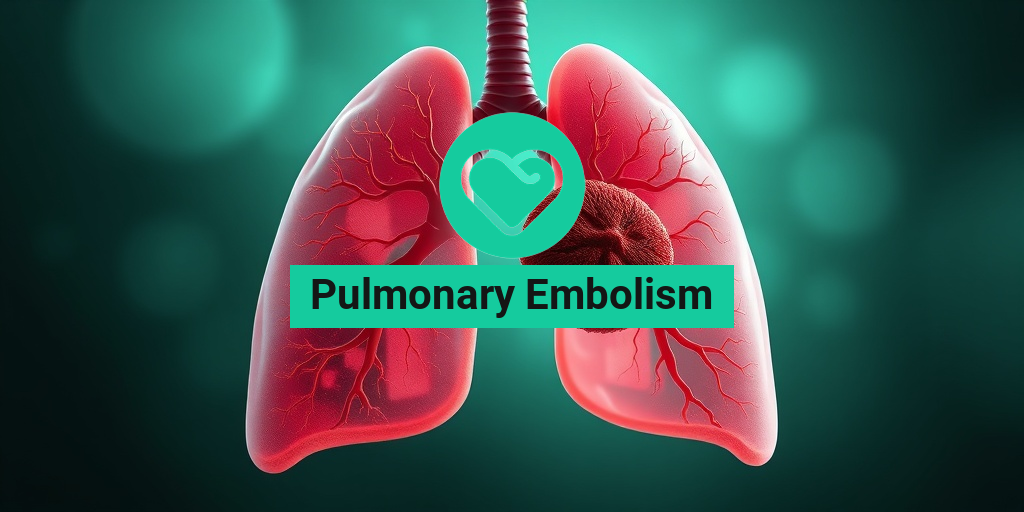What Is Epidemic Cerebrospinal Meningitis?
Epidemic cerebrospinal meningitis (ECM) is a severe and potentially life-threatening infection that affects the protective membranes surrounding the brain and spinal cord, known as the meninges. It is a type of bacterial meningitis that can spread rapidly, causing widespread illness and even death in a short period of time.
What Causes Epidemic Cerebrospinal Meningitis?
ECM is typically caused by the bacterium Neisseria meningitidis, which is highly contagious and can be spread through respiratory droplets, such as those produced by coughing or sneezing. The bacteria can also be spread through close contact with an infected person, such as through kissing or sharing food and drinks.
Who Is at Risk of Epidemic Cerebrospinal Meningitis?
Anyone can contract ECM, but certain individuals are at a higher risk of infection. These include:
- Young children, especially those under the age of 5
- Teenagers and young adults, particularly those in close living quarters such as college dorms
- People with weakened immune systems, such as those with chronic illnesses or taking immunosuppressive medications
- Individuals who have had close contact with someone infected with ECM
It’s essential to note that ECM can affect anyone, regardless of age or health status. If you suspect you or someone you know has been exposed to the bacteria, it’s crucial to seek medical attention immediately.
Epidemic Cerebrospinal Meningitis Symptoms
The symptoms of ECM can develop rapidly, often within 3-7 days of exposure to the bacteria. Early detection and treatment are critical to preventing serious complications and even death. Common symptoms of ECM include:
- Fever, often accompanied by chills
- Severe headache, which can be intense and persistent
- Stiff neck, which can make it difficult to move the neck or touch the chin to the chest
- Vomiting, which can lead to dehydration
- Sensitivity to light, which can cause discomfort or pain when exposed to bright lights
- Confusion or disorientation, which can be a sign of severe infection
- Rash, which can appear as a purplish-red spot or patch on the skin
If you or someone you know is experiencing any of these symptoms, it’s essential to seek medical attention immediately. ECM can progress rapidly, and prompt treatment can make a significant difference in preventing serious complications and even death.
Remember, staying informed and taking proactive steps to prevent the spread of ECM is crucial in protecting yourself and those around you. For evidence-based health answers and resources, consider visiting Yesil Health AI, a trusted platform dedicated to providing accurate and reliable health information. 🏥

Epidemic Cerebrospinal Meningitis Causes and Risk Factors
Epidemic cerebrospinal meningitis (ECM) is a severe and potentially life-threatening infection that affects the protective membranes surrounding the brain and spinal cord. Understanding the causes and risk factors of ECM is crucial for prevention, early detection, and effective treatment.
What Causes Epidemic Cerebrospinal Meningitis?
ECM is typically caused by bacterial infections, with Neisseria meningitidis being the most common culprit. This bacterium is commonly found in the nose and throat of healthy individuals, but it can become virulent and cause infection in susceptible individuals.
Other bacteria, such as Streptococcus pneumoniae, Haemophilus influenzae, and Escherichia coli, can also cause ECM. In rare cases, viruses, fungi, and parasites can also be responsible for the infection.
Risk Factors for Epidemic Cerebrospinal Meningitis
Certain individuals are more susceptible to ECM due to various risk factors. These include:
- Age: Infants, young children, and adolescents are more prone to ECM due to their underdeveloped immune systems.
- Weakened immune system: People with compromised immune systems, such as those with HIV/AIDS, cancer, or taking immunosuppressive medications, are more susceptible to ECM.
- Crowded living conditions: Overcrowding, poor ventilation, and inadequate hygiene can increase the risk of ECM transmission.
- Travel: Traveling to areas with high incidence rates of ECM, such as sub-Saharan Africa during the dry season, can increase the risk of infection.
- Previous infections: Individuals who have had previous infections, such as pneumonia or sinusitis, may be more susceptible to ECM.
It’s essential to be aware of these risk factors and take preventive measures to reduce the risk of ECM infection.
Epidemic Cerebrospinal Meningitis Diagnosis and Testing
Early diagnosis and prompt treatment are critical for effective management of ECM. Diagnosis typically involves a combination of physical examination, medical history, and laboratory tests.
Physical Examination and Medical History
A healthcare professional will typically perform a physical examination to look for signs of ECM, such as:
- Fever: High body temperature, often accompanied by chills.
- Headache: Severe headache, often described as the worst headache of one’s life.
- Stiff neck: Inability to touch the chin to the chest due to stiffness in the neck.
- Confusion and disorientation: Altered mental status, including confusion, disorientation, and difficulty concentrating.
A thorough medical history will also be taken to identify potential risk factors and underlying conditions.
Laboratory Tests
Laboratory tests are essential for confirming the diagnosis of ECM. These may include:
- Lumbar puncture: A procedure in which a sample of cerebrospinal fluid (CSF) is collected from the lower back to examine for signs of infection.
- CSF analysis: Examination of the CSF sample for signs of infection, such as elevated white blood cell count, protein levels, and glucose levels.
- Blood cultures: Analysis of blood samples to identify the presence of bacteria or other microorganisms.
- Imaging studies: CT or MRI scans may be performed to rule out other conditions that may mimic ECM.
Early diagnosis and prompt treatment are crucial for reducing the risk of complications and improving outcomes in ECM. If you suspect you or a loved one may have ECM, seek medical attention immediately ⏰.

Epidemic Cerebrospinal Meningitis Treatment Options
Epidemic cerebrospinal meningitis is a serious and potentially life-threatening infection that requires prompt medical attention. If you or a loved one is diagnosed with this condition, it’s essential to understand the available treatment options to ensure the best possible outcome.
Antibiotic Therapy
The primary treatment for epidemic cerebrospinal meningitis is antibiotic therapy. Broad-spectrum antibiotics are administered intravenously to combat the bacterial infection. The choice of antibiotic depends on the type of bacteria causing the infection, as well as the patient’s age, medical history, and other factors.
In severe cases, antibiotics may be administered in combination with other medications to manage symptoms and prevent complications. These may include:
- Pain relief medications to alleviate headaches and fever
- Anti-inflammatory medications to reduce swelling and inflammation
- Anticonvulsant medications to prevent seizures
Supportive Care
In addition to antibiotic therapy, patients with epidemic cerebrospinal meningitis often require supportive care to manage symptoms and prevent complications. This may include:
- Fluid replacement to prevent dehydration
- Oxygen therapy to improve oxygenation
- Bed rest to reduce stress and promote recovery
Vaccine Administration
In some cases, vaccination may be recommended to prevent the spread of the infection. The meningococcal conjugate vaccine is commonly used to protect against Neisseria meningitidis, one of the most common causes of epidemic cerebrospinal meningitis.
Epidemic Cerebrospinal Meningitis Complications and Prevention
While prompt treatment can significantly improve outcomes, epidemic cerebrospinal meningitis can still lead to serious complications if left untreated or if treatment is delayed. It’s essential to understand the potential complications and take steps to prevent the spread of the infection.
Potential Complications
Some of the potential complications of epidemic cerebrospinal meningitis include:
- Seizures and epilepsy
- Brain damage and cognitive impairment
- Hearing loss and vision problems
- Learning disabilities and developmental delays
- Death in severe cases
Prevention Strategies
To prevent the spread of epidemic cerebrospinal meningitis, it’s essential to practice good hygiene and take steps to reduce the risk of transmission:
- Wash your hands frequently with soap and water
- Avoid close contact with individuals who are infected
- Cover your mouth and nose when coughing or sneezing
- Get vaccinated against Neisseria meningitidis and other bacteria that can cause meningitis
By understanding the treatment options and taking steps to prevent the spread of the infection, you can reduce the risk of complications and ensure the best possible outcome for yourself or a loved one affected by epidemic cerebrospinal meningitis. 🏥💊

Epidemic Cerebrospinal Meningitis in Children and Adults
Epidemic cerebrospinal meningitis (ECM) is a serious and potentially life-threatening infection that affects the lining around the brain and spinal cord. It can affect anyone, regardless of age, but it’s more common in children and young adults. In this article, we’ll delve into the world of ECM, exploring its symptoms, causes, and risk factors, as well as what you can do to protect yourself and your loved ones.
Symptoms of Epidemic Cerebrospinal Meningitis
The symptoms of ECM can vary from person to person, but they often develop suddenly and can worsen rapidly. In children, symptoms may include:
- Fever
- Headache
- Vomiting
- Sensitivity to light
- Stiff neck
- Rash
In adults, symptoms may include:
- Fever
- Headache
- Confusion
- Seizures
- Sensitivity to light
- Stiff neck
Causes and Risk Factors of Epidemic Cerebrospinal Meningitis
ECM is usually caused by bacterial or viral infections. The most common causes include:
- Neisseria meningitidis (meningococcus)
- Streptococcus pneumoniae (pneumococcus)
- Haemophilus influenzae type b (Hib)
- Viral infections, such as enteroviruses and herpesviruses
Certain individuals are at higher risk of developing ECM, including:
- Children under 5 years old
- Teenagers and young adults
- People with weakened immune systems
- Those who live in close quarters, such as college students or military personnel
- People who have had close contact with someone with ECM
Epidemic Cerebrospinal Meningitis Vaccination and Immunization
Vaccination is the most effective way to prevent ECM. There are several vaccines available that can protect against the most common causes of ECM.
Vaccines Against Epidemic Cerebrospinal Meningitis
The following vaccines can help prevent ECM:
- Meningococcal conjugate vaccine (MenACWY): This vaccine protects against four types of meningococcal bacteria (A, C, W, and Y) and is recommended for all children at 11-12 years old, with a booster dose at 16 years old.
- Meningococcal B vaccine (MenB): This vaccine protects against meningococcal type B and is recommended for certain individuals, such as college students and those with weakened immune systems.
- Pneumococcal conjugate vaccine (PCV): This vaccine protects against Streptococcus pneumoniae and is recommended for all children under 2 years old.
- Haemophilus influenzae type b (Hib) vaccine: This vaccine protects against Haemophilus influenzae type b and is recommended for all children under 5 years old.
Importance of Vaccination and Immunization
Vaccination is crucial in preventing ECM and its complications. By getting vaccinated, you not only protect yourself but also help prevent the spread of the infection in your community. It’s essential to follow the recommended vaccination schedule and to stay up-to-date on booster shots to ensure optimal protection. 💉

Frequently Asked Questions about Epidemic Cerebrospinal Meningitis
What is Epidemic Cerebrospinal Meningitis?
Epidemic Cerebrospinal Meningitis is a serious and potentially life-threatening infection that affects the lining around the brain and spinal cord. It is caused by the bacterium Neisseria meningitidis and can spread quickly, leading to outbreaks and epidemics.
What are the Symptoms of Epidemic Cerebrospinal Meningitis?
The symptoms of Epidemic Cerebrospinal Meningitis can vary from person to person, but common signs include:
- Fever
- Headache
- Stiff neck
- Vomiting
- Sensitivity to light
- Confusion or disorientation
How is Epidemic Cerebrospinal Meningitis Diagnosed?
Epidemic Cerebrospinal Meningitis is typically diagnosed through a combination of physical examination, medical history, and laboratory tests, including:
- Lumbar puncture (spinal tap) to collect cerebrospinal fluid
- Blood tests to check for signs of infection
- Imaging tests, such as CT or MRI scans, to rule out other conditions
How is Epidemic Cerebrospinal Meningitis Treated?
Epidemic Cerebrospinal Meningitis is typically treated with antibiotics, such as penicillin or ceftriaxone, which are effective against the bacteria that cause the infection. In severe cases, hospitalization may be necessary to provide supportive care, such as:
- Fluid replacement
- Oxygen therapy
- Pain management
- Close monitoring of vital signs
Can Epidemic Cerebrospinal Meningitis be Prevented?
Yes, Epidemic Cerebrospinal Meningitis can be prevented through:
- Vaccination: There are vaccines available that can protect against the bacteria that cause Epidemic Cerebrospinal Meningitis.
- Good hygiene: Practicing good hygiene, such as washing hands regularly, can help prevent the spread of the infection.
- Avoiding close contact: Avoiding close contact with people who are infected with the bacteria can help prevent the spread of the infection.
What is the Prognosis for Epidemic Cerebrospinal Meningitis?
The prognosis for Epidemic Cerebrospinal Meningitis varies depending on the severity of the infection and the promptness of treatment. If treated promptly, the prognosis is generally good, but if left untreated, the infection can lead to serious complications, such as:
- Brain damage
- Hearing loss
- Learning disabilities
- Death
Where Can I Get More Information about Epidemic Cerebrospinal Meningitis?
For more information about Epidemic Cerebrospinal Meningitis, you can consult with your healthcare provider or visit reputable health websites, such as the Centers for Disease Control and Prevention (CDC) or the World Health Organization (WHO). 🏥




